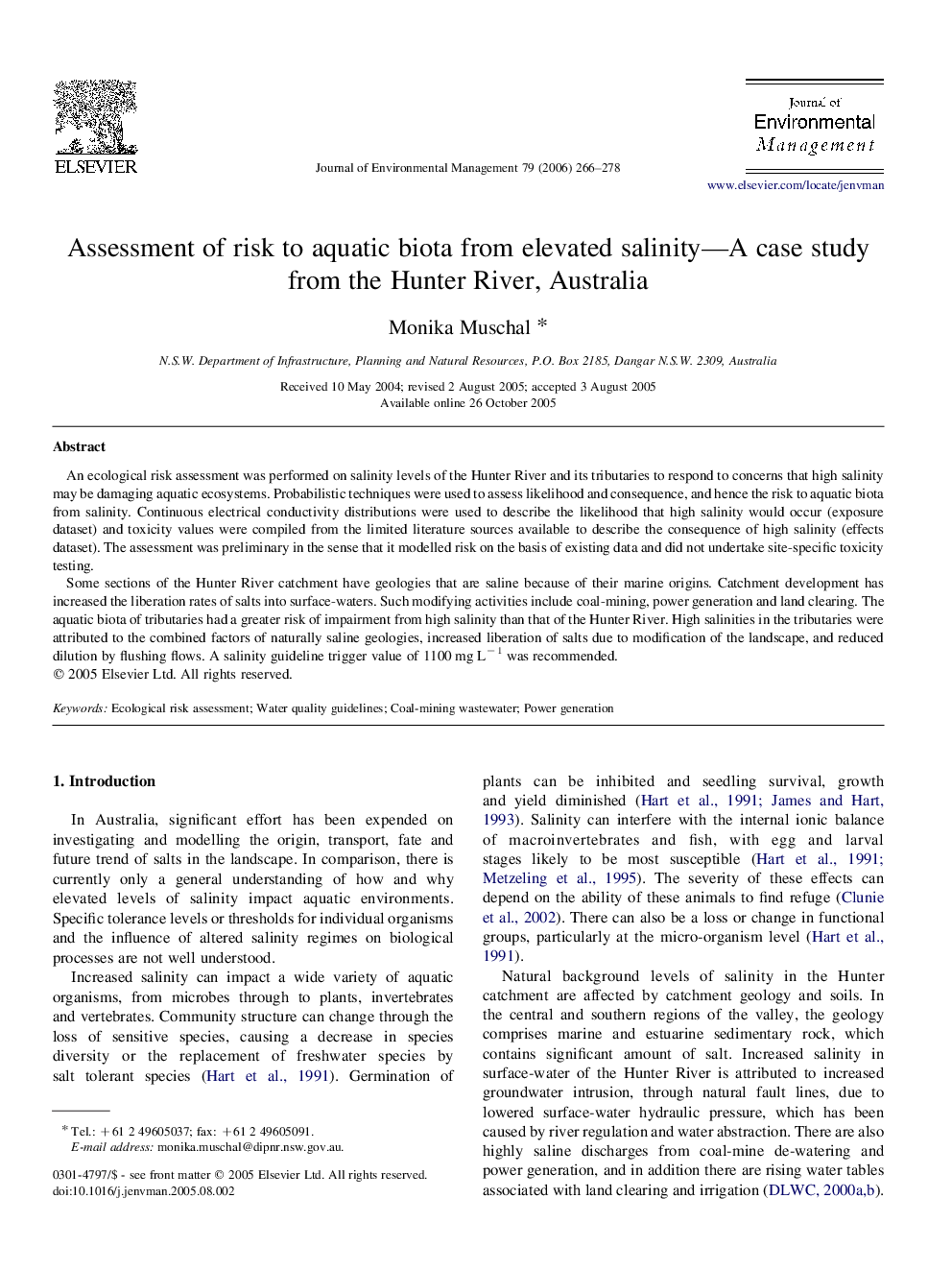| کد مقاله | کد نشریه | سال انتشار | مقاله انگلیسی | نسخه تمام متن |
|---|---|---|---|---|
| 1058849 | 947147 | 2006 | 13 صفحه PDF | دانلود رایگان |

An ecological risk assessment was performed on salinity levels of the Hunter River and its tributaries to respond to concerns that high salinity may be damaging aquatic ecosystems. Probabilistic techniques were used to assess likelihood and consequence, and hence the risk to aquatic biota from salinity. Continuous electrical conductivity distributions were used to describe the likelihood that high salinity would occur (exposure dataset) and toxicity values were compiled from the limited literature sources available to describe the consequence of high salinity (effects dataset). The assessment was preliminary in the sense that it modelled risk on the basis of existing data and did not undertake site-specific toxicity testing.Some sections of the Hunter River catchment have geologies that are saline because of their marine origins. Catchment development has increased the liberation rates of salts into surface-waters. Such modifying activities include coal-mining, power generation and land clearing. The aquatic biota of tributaries had a greater risk of impairment from high salinity than that of the Hunter River. High salinities in the tributaries were attributed to the combined factors of naturally saline geologies, increased liberation of salts due to modification of the landscape, and reduced dilution by flushing flows. A salinity guideline trigger value of 1100 mg L−1 was recommended.
Journal: Journal of Environmental Management - Volume 79, Issue 3, May 2006, Pages 266–278